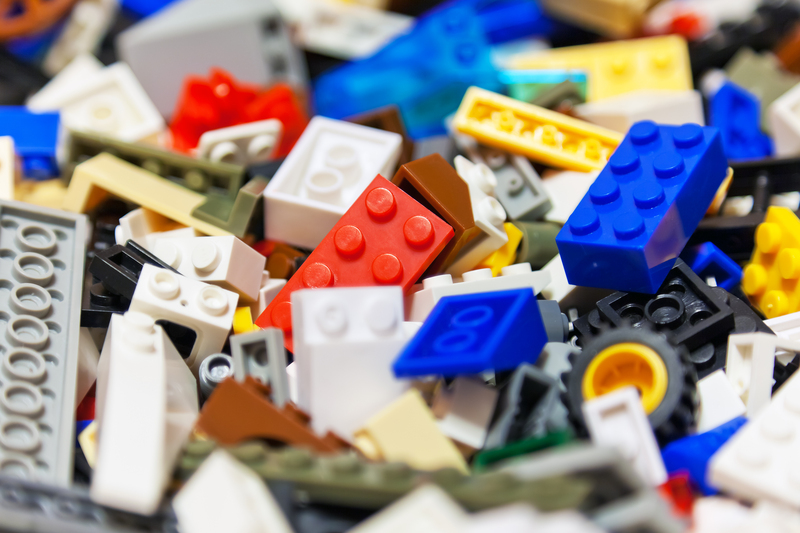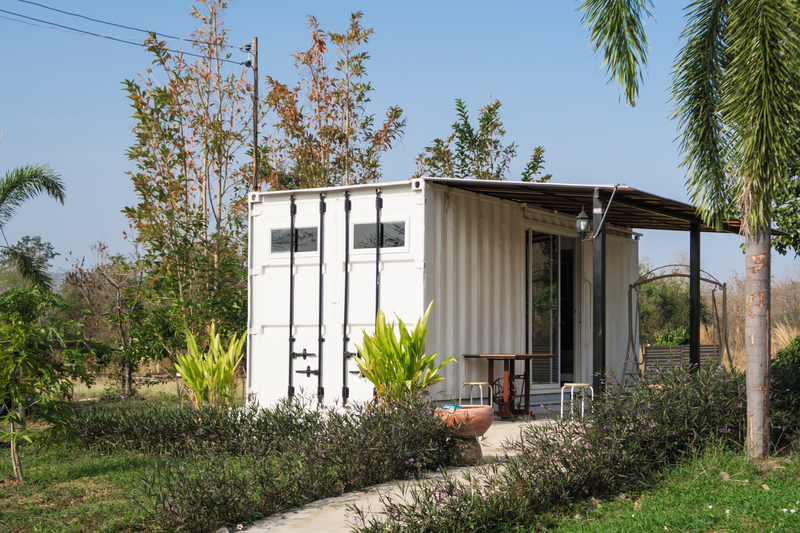Transform Your Plant Pot Disposal Routine: Practical and Sustainable Solutions
Are you tired of accumulating old plant pots with no idea what to do with them? The way you dispose of your plant pots can have a significant impact on both the environment and your own gardening experience. In this comprehensive guide, we'll walk you through effective and creative ways to transform your plant pot disposal routine. Say goodbye to clutter and hello to sustainability!
Why Rethink Your Plant Pot Disposal?
From plastic to terracotta, millions of plant containers find their way into landfills every year. Unfortunately, improper disposal of plant pots can harm the environment. Plastic pots take centuries to break down, and even biodegradable materials can contribute to waste if not managed correctly.
- Environmental Impact: Excessive landfill waste contributes to pollution.
- Resource Waste: Many pots can be reused, saving money and resources.
- Space Clutter: Unused pots occupy valuable storage space.
Transforming your plant pot disposal routine is not just about getting rid of clutter - it's about creating a positive impact. Eco-friendly plant pot disposal methods offer sustainable solutions that every gardener should know.

Types of Plant Pots and Their Disposal Challenges
Let's explore the most common types of plant pots and the unique considerations for each:
Plastic Pots
- Accessibility: Widely used, lightweight, and affordable.
- Disposal Challenge: Can rarely be recycled through regular curbside programs due to mixed plastics or contamination from soil residues.
Terracotta and Clay Pots
- Sustainability: Made of natural materials but require energy to produce and fire.
- Disposal Challenge: Non-biodegradable and can break, making reuse sometimes difficult.
Ceramic Pots
- Durability: Attractive and long-lasting.
- Disposal Challenge: Not generally recyclable due to glazes and designs but excellent for upcycling.
Biodegradable Pots
- Eco-friendliness: Made from materials like peat, wood pulp, or coir.
- Disposal Challenge: Can be composted but only if facilities exist, and not all break down efficiently outside industrial conditions.
Understanding these differences is the first step to transforming your plant pot recycling routine.
How to Responsibly Dispose of Plant Pots
1. Reuse Plant Pots at Home
Before tossing out your old pots, consider how they might serve a new purpose. Some creative reuse ideas include:
- Seed Starters: Small plastic pots make ideal containers for sprouting seeds.
- Organizers: Use them in your garage, workshop, or craft room to sort nails, screws, and supplies.
- Gift Pots: Paint and decorate for personalized plant gifts.
- Birdbaths and Feeders: Upside-down terracotta pots can become rustic birdbaths or feeders.
2. Repurpose and Upcycle for Garden Art
Transform your old pots into beautiful, functional garden features. Some popular projects include:
- Pot Stacks: Create whimsical stacked pot sculptures or fairy gardens.
- Herb Towers: Build a vertical herb garden by stacking pots with holes for drainage and planting your favorite herbs.
- Mini Water Features: Use ceramic pots and a small pump to craft a lovely patio fountain.
Turning plant containers into garden art not only diverts waste but also adds a personal touch to your landscape.
3. Donate or Share Your Unneeded Pots
Share your surplus! Donating plant pots is an excellent way to help others and reduce landfill waste. Consider:
- Community Gardens: Many local gardens, schools, and nonprofits welcome pot donations.
- Plant Swaps or Garden Clubs: Fellow gardeners are often searching for sturdy reusable pots.
- Online Marketplaces: List pots for free on platforms like Craigslist, Facebook Marketplace, or Freecycle.
4. Recycle Plastic Plant Pots Properly
If you must dispose of plastic pots, be sure to:
- Check Your Local Guidelines: Not all plastics are accepted in curbside recycling. Look for plastic resin codes (usually #2 or #5).
- Clean Thoroughly: Remove all soil, roots, and plant material to prevent contamination.
- Visit Garden Centers: Many nurseries or big-box stores (such as Lowe's or Home Depot) offer take-back programs for recycling plastic pots and trays.
Recycling plant pots helps conserve resources and reduces landfill waste - but only if done correctly!
5. Compost Biodegradable Pots
- Home Composting: Break apart fiber, coir, or paper pots and mix them with your compost pile.
- Green Waste Pickup: Some regions accept biodegradable pots with yard debris collections.
- Check Labels: Ensure pots are truly compostable and not just labeled "biodegradable," which may not break down naturally.
Composting is the most sustainable route for true biodegradable pots, closing the loop on your gardening project.
Transformative Alternatives: Smarter Pot Choices for the Future
Transform your plant pot disposal routine by making more sustainable choices from the start:
- Opt for Durable Materials: Choose pots made from recycled plastic, clay, or metal for long-term use.
- Buy Local or Secondhand: Support local artisans or secondhand shops to reduce transportation and manufacturing waste.
- Seek Out Pot-Free Options: Grow directly in the ground, use raised beds, or try hydroponic setups to minimize container use altogether.
Smart purchasing is just as important as smart disposal. Consider your options and reduce the need for future waste by investing in high-quality or creative, reusable containers.
Eco-Friendly Plant Pot Disposal: Step-by-Step Routine
Ready to overhaul your plant pot disposal process? Here's a step-by-step guide to help you establish a more sustainable and organized system:
- Sort and Clean: Separate pots by material (plastic, ceramic, clay, biodegradable). Clean them thoroughly for reuse or recycling.
- Assess Condition: Choose which pots to keep, which to donate or gift, which to creatively reuse, and which truly need disposal.
- Set Up Reuse Stations: Designate shelves or bins for reusable pots and label them to easily find what you need for your next planting.
- Connect with Community: Reach out to local gardeners or organizations who may want surplus pots.
- Research Local Programs: Find drop-off points for plastic pot recycling, or composting facilities for biodegradable pots.
- Dispose Responsibly: Only discard what cannot be reused, recycled, or composted. Safely break apart ceramic or clay pots for use as drainage material in garden beds.
Streamlining your routine makes it easy to adopt and maintain sustainable habits all year round.
Gardener's FAQ: Helping You Transform Your Plant Pot Disposal Routine
Can all plastic plant pots be recycled?
No, not all plastic pots are accepted by local recycling programs. Look for the #2 or #5 recycling symbol, remove all soil, and check with your local municipality or garden center recycling initiatives.
What about broken terracotta or ceramic pots?
Use the pieces as drainage at the bottom of other pots or garden beds, incorporate them into mosaic projects, or discard them in landfill if unusable (but try to upcycle first!).
Can I compost all biodegradable pots at home?
Many fiber and coir pots can be home composted by breaking them into smaller pieces. However, some "biodegradable" plastics need industrial composting. Read the packaging and follow local composting guidelines.
How can I reduce the number of plant pots I use?
- Propagate new plants in reused containers like yogurt cups.
- Try no-pot gardening methods such as direct sowing or raised beds.

Creative Plant Pot Upcycling Inspiration
Let's finish with some creative ways to upcycle plant pots beyond traditional reuse:
- Holiday Decorations: Paint pots for Halloween (pumpkins/ghosts) or Christmas (snowmen/reindeer).
- Desk Organizers: Store pens, tools, or small office supplies.
- Luminaries: Poke holes in clay pots and place candles inside for magical garden lighting.
- Outdoor Games: Transform sturdy pots into stacking or tossing games for kids.
- Edible Gardening: Grow microgreens on your windowsill using old yogurt or seedling pots.
Conclusion: Make Plant Container Disposal an Eco-Friendly Habit
Transforming your plant pot disposal routine is a powerful way to reduce your environmental footprint, spark creativity, and connect with your gardening community. By reusing, recycling, repurposing, and composting where possible, you contribute to a healthier, greener planet - and a more organized home.
Whether you're a seasoned gardener or a newbie plant parent, every little change in your routine makes a big difference. Explore the options above and inspire others to embrace smarter, greener ways of handling plant pots!
Start today and make your plant pot disposal routine as beautiful and thriving as your garden itself.